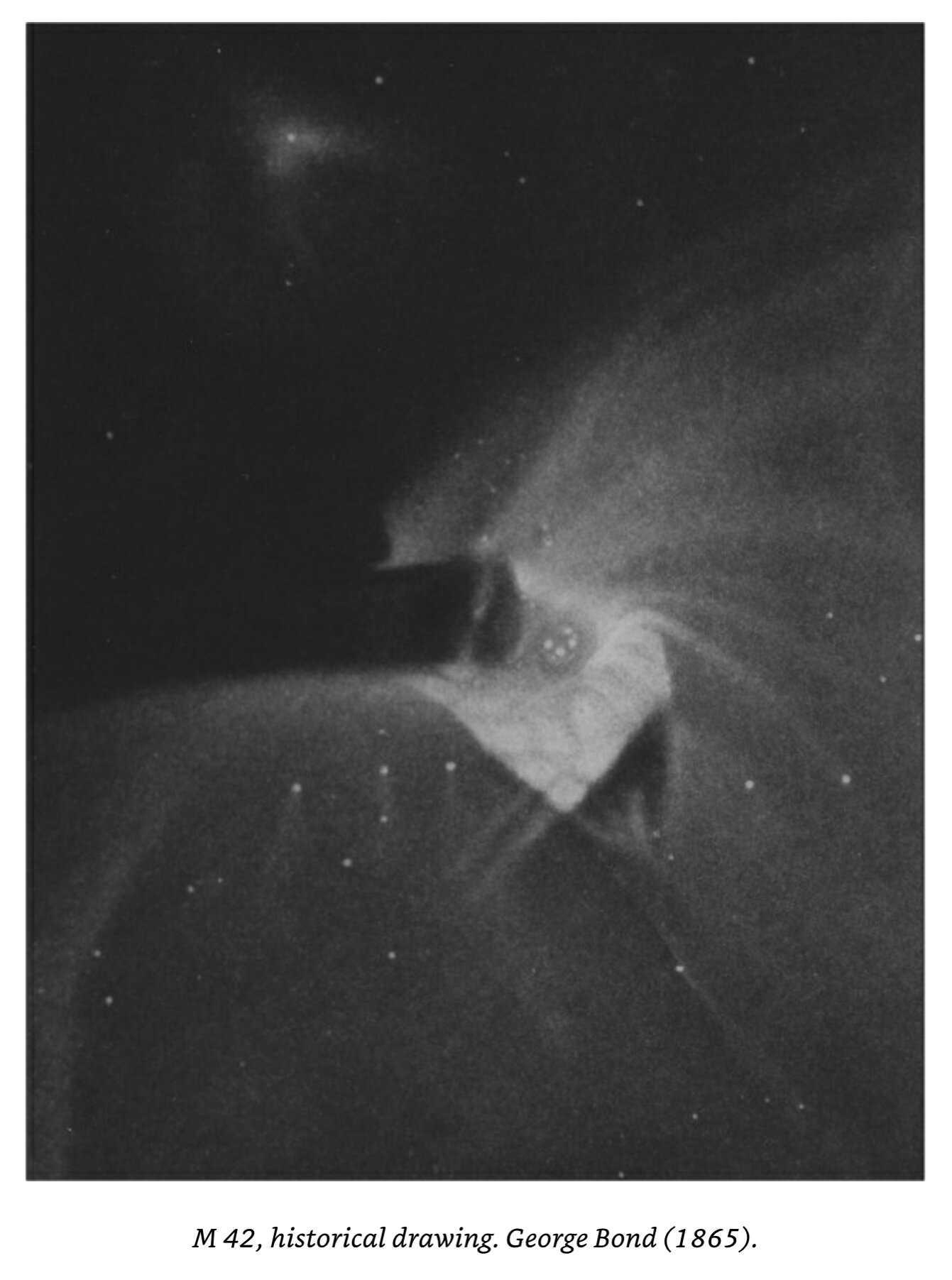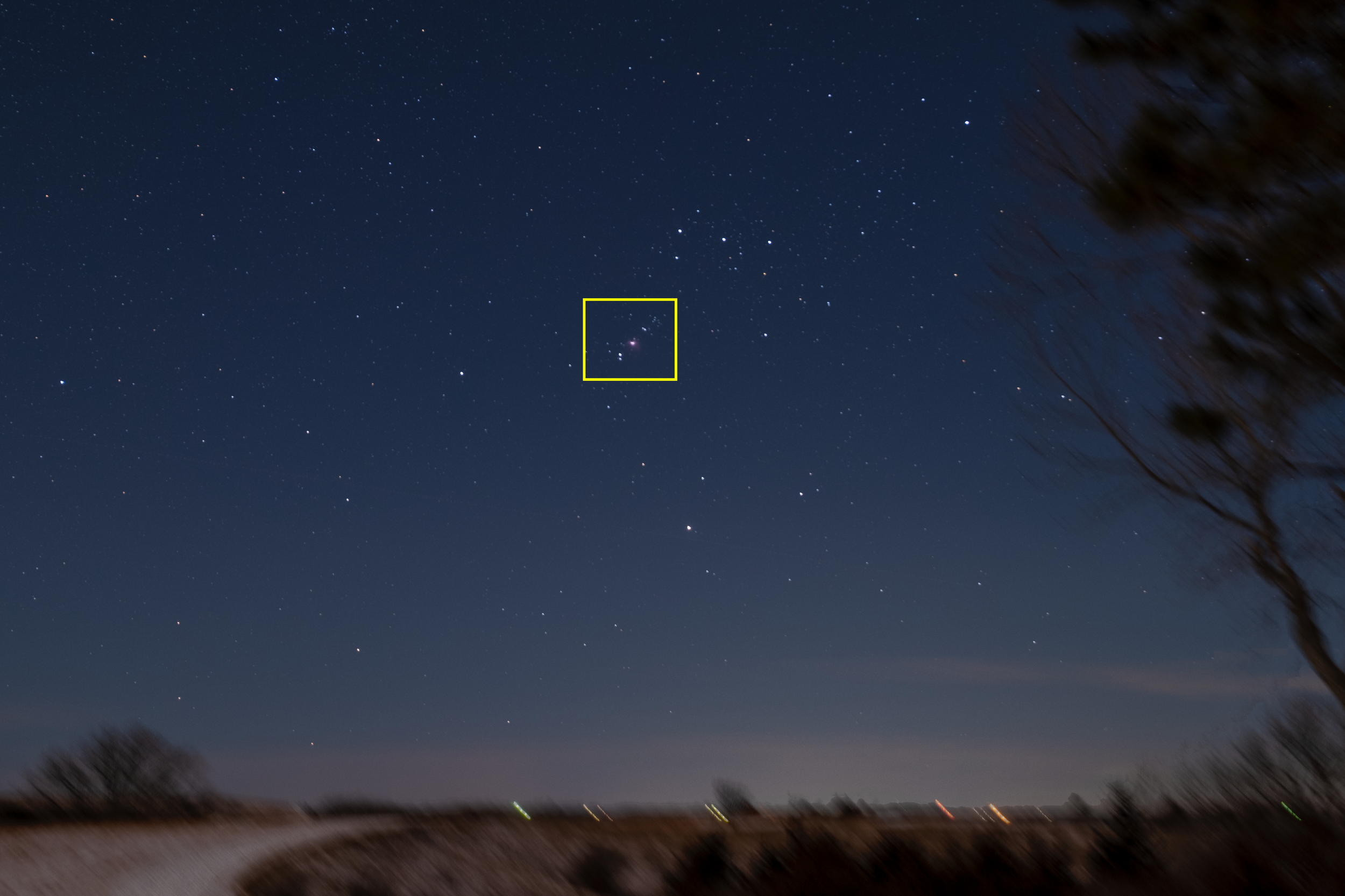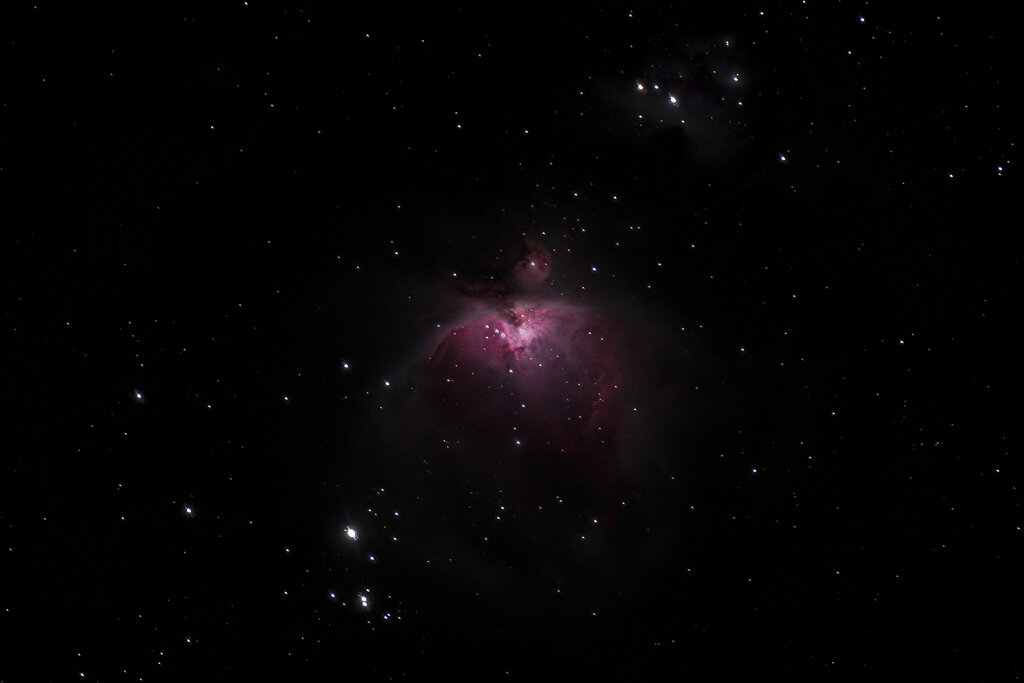M42 - Orion Nebula
Type: Galactic Nebula
Discoverer: Nicolas-Claude Fabri de Peiresc, 1611
Size: 35 ly
Distance: 13500 ly
Constellation: Orion
My Notes: Other than the Andromeda Galaxy, this has been the deep sky object I’ve wanted to photograph the most. Like many people, Orion has always been my favorite constellation, in no small part due to its ease of discovery by even the youngest of astronomers. On the night of Jan 4-5, 2021, I photographed it using my Fujifilm XT-4 mirrorless camera with a 100-400mm f4.5-5.6 lens and a 1.4x teleconverter
This was my first foray into astrophotography in the winter. I set up from 2330-0030 at which time the thermometer read 23℉. Much of my equipment was complaining about the cold. My laptop fans ground on and off sounding like they had rocks in them until the chassis warmed up enough from being on. The batteries of my laser pointer and interval timer both died due to cold. This meant I had to rely on my camera’s internal interval timer which works well enough, but it’s not as easy to use as the external one. I did get to try out my new dew heater for my lens for the first time. I don’t know how much humidity there was, but the lens stayed clear with it on so it didn’t hurt anything. I also foolishly used too short of a power cable for my camera and didn’t check it’s position well enough. After about a 20 shot session midway through the night, I noticed the cable was pulling on the entire setup both the camera and the star tracker to be misaligned making those 40 minutes wasted. I’m blaming this on me being too cold.
I never know if I should leave Image Stabilization on or off. Sometimes I get better results with it on, but I left it off for this object. There was no wind to speak of and I seemed to get clearer pictures when it was off. I also tried out a new ball head that I purchased from moveshootmove.com. Despite being cheap, it does work better than any of my other cheap ball heads, but it still leaves much to be desired for a solid fix without movement while tightening. On this outing I realized more than ever that I need a better tripod and ball head. Everything wiggled at an annoying level, considering this should have been one of the easier shoots.
Along with M44 and M45, M44 is a bit odd that Messier added it to his list. The speculation is that he added these 3 easily observable objects to polish off his initial publication at a nice round 45 objects.
Messier Notes: “I have examined a large number of times the nebula in the sword of Orion, which Huygens discovered in the year 1656, & of which he has given a drawing in the work which he has published in 1659, under the title Systema Saturnium [Saturnian System]. It has been observed since by different Astronomers. M. Derham, in a Memoir printed in the Philosophical Transactions, no. 428, page 70, speaks of that nebula which he has examined with a reflecting telescope of 8 feet [FL]. Here is the translation [actually here, the text] of what he has reported in this Memoir. "[But] only that in Orion, hath some Stars in it, visible only with the Telescope, but by no Means sufficient to cause the Light of the Nebulose there. But by these Stars it was, that I first perceived the Distance of the Nebulosae to be greater than that of the Fix'd Stars, and put me upon enquiring into the rest of them. Every one of which I could very visibly, and plainly discern, to be at immense Distance beyond the Fix'd Stars near them, whether visible to the naked Eye, or Telescopick only; yea, they seemed to be as far beyond the Fix'd Stars, as any of those Stars are from Earth." M. le Gentil also examined this nebula with ordinary refractors of 8, of 15 & of 18 feet [focal] length; as well as a Gregorian telescope of 6 feet, which belongs to Mr. Pingré. He has published his observations in a Memoir which can be found printed in the Volumes of the Academy, year 1759, page 453. There is a joint of the drawings which he had made of it at that time, as well as those of Huygens & of Picard; these drawings differ from each other, so that one may suspect that this nebula is subject to sort of variations. Here is what I have reported about that nebula in the Journal of my Observations. On March 4, 1769, the sky was perfectly serene, Orion was going to pass the meridian, I have directed to the nebula of this constellation a Gregorian telescope of 30 pouces focal length, which magnified 104 times; one saw it perfectly well, & I drawed the extension of the nebula, which I compared consequently to the drawings which M. le Gentil has given of it, I found some differences. This nebula contains eleven stars; there are four near its middle, of different magnitudes & strongly compressed to each other; they are of an extraordinary brilliance: here is the position of the brightest of the four stars, which Flamsteed, in his catalog, designated by the greek letter Theta, of fourth magnitude, 80d 59' 40" in right ascension, & 5d 34' 6" in southern declination: this position has been deduced from that which Flamsteed has given in his catalog.”
Historical Drawing - George Bond (1865)
Orion's belt and Sword - 4 frames at 40 sec ISO-320 f/4 22mm (30 FF equiv.)
Focus area of 540mm image
6 frames at 120 sec Min Algorithm ISO-320 f/8 540mm (810 FF equiv)




